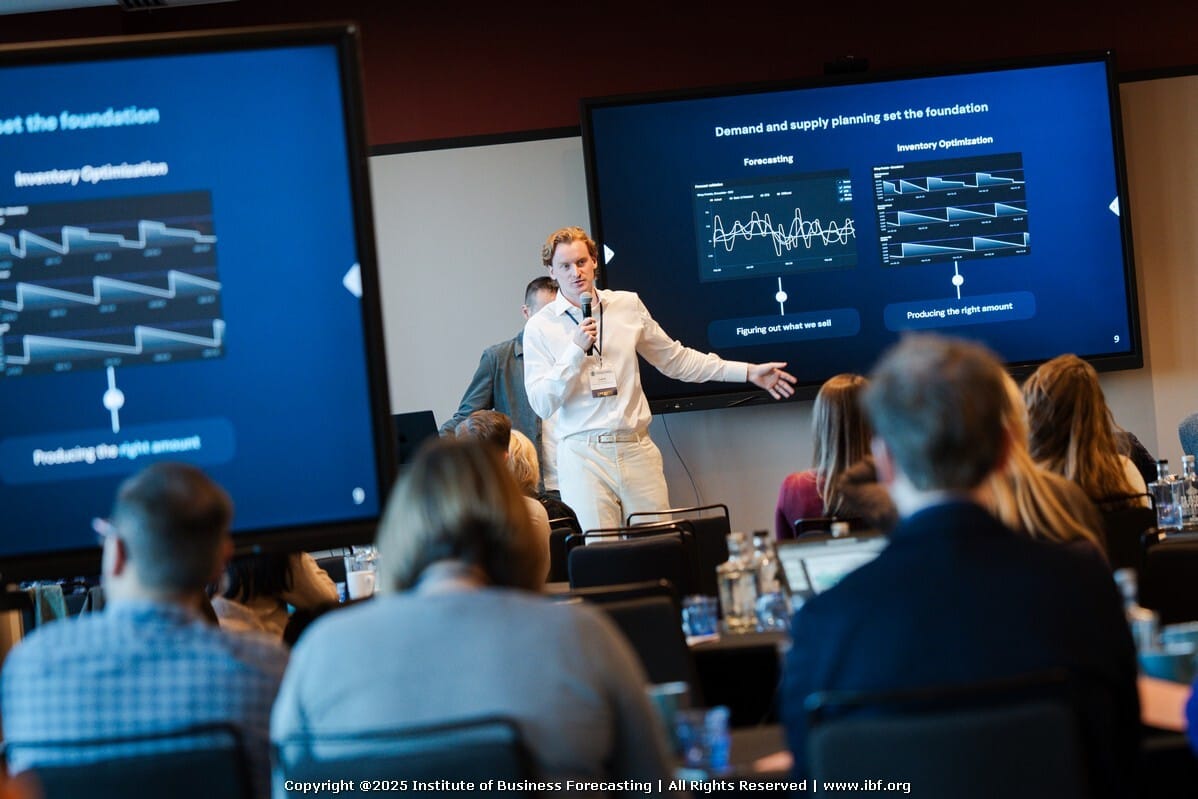- Conscious Supply Chain
- Posts
- What Leading Planners Taught Me in Amsterdam: Issue 18
What Leading Planners Taught Me in Amsterdam: Issue 18
...and Why S&OP Is Non-Negotiable
IBF Learnings in Amsterdam Amsterdam
I had the opportunity to speak at IBF in Amsterdam about Agentic Supply Chains together with one of our customers, Bernd from Mammaly.
IBF is one of the largest events for Business Planning & Forecasting. I got to connect with leading planners from the largest flavor manufacturers, the world’s leading beverage company, and plenty of niche champions.

Demand and supply set the foundation
𝗢𝗻𝗲 𝗯𝗶𝗴 𝘁𝗮𝗸𝗲𝗮𝘄𝗮𝘆: 𝗳𝗼𝗿𝗲𝗰𝗮𝘀𝘁𝗶𝗻𝗴 𝗶𝘀 𝗼𝗻𝗹𝘆 𝘀𝘁𝗲𝗽 𝟭.
→ The real value comes from AI-driven exception management and scenario analysis, not just from a “better” forecast.
A few other key learnings from the sessions:
𝗗𝗲𝗺𝗮𝗻𝗱 𝗽𝗹𝗮𝗻𝗻𝗶𝗻𝗴 𝗹𝗶𝘃𝗲𝘀 𝗼𝗿 𝗱𝗶𝗲𝘀 𝘄𝗶𝘁𝗵 𝘂𝘀𝗲𝗿 𝗮𝗱𝗼𝗽𝘁𝗶𝗼𝗻.
The most sophisticated model isn’t always the best model, since it might not be used. Explainable, transparent models can drive faster adoption and impact.
𝗔𝘁 𝘁𝗵𝗲 𝘀𝗮𝗺𝗲 𝘁𝗶𝗺𝗲, 𝗲𝘃𝗲𝗻 𝗮 𝟭% 𝗿𝗲𝗱𝘂𝗰𝘁𝗶𝗼𝗻 𝗶𝗻 𝗳𝗼𝗿𝗲𝗰𝗮𝘀𝘁 𝗲𝗿𝗿𝗼𝗿 𝗰𝗮𝗻 𝘂𝗻𝗹𝗼𝗰𝗸 𝟳 𝗳𝗶𝗴𝘂𝗿𝗲𝘀 𝗶𝗻 𝘃𝗮𝗹𝘂𝗲.
For a €300M business, that can easily mean several million in reduced write-offs and less working capital tied up in inventory.
But you only get there if it’s measured consistently and correctly, and you actually visualise the impact on the business for all stakeholders.
→ It is on the company to find their ‘equilibrium’. One must-do is to understand how forecast accuracy is linked to business value – because only then:
Sales has visibility on the value of their adjustments.
We have a shared KPI with which we can measure success (e.g. MAPE-3).
𝗣𝗹𝗮𝗻𝗻𝗶𝗻𝗴 𝗮𝗻𝗱 𝗲𝘅𝗲𝗰𝘂𝘁𝗶𝗼𝗻 𝗮𝗿𝗲 𝘀𝘁𝗶𝗹𝗹 𝘁𝗼𝗼 𝗼𝗳𝘁𝗲𝗻 𝗱𝗶𝘀𝗰𝗼𝗻𝗻𝗲𝗰𝘁𝗲𝗱.
They need to live together, not in separate workflows. One example is replenishment updates. Only by understanding when delays happen can we understand our supply gaps directly and react to them in real time.
For example, we might see a key PO or shipment slipping. We could:
Call the coman to try to expedite.
Send goods from one warehouse to another (but which?).
Decrease marketing activities.
Or try all of the above?
This real-time scenario analysis – and then executing those decisions – belongs in one platform. That’s why we’ve built Spherecast to connect forecasting, exceptions, and execution in one place.
Today, these trade-offs live in emails, spreadsheets, and meetings – exactly where speed and accountability go to die.
Amazing to see what the IBF has built, bringing real pioneers in the industry into one room.
Already looking forward to the next Institute of Business Forecasting & Planning event.